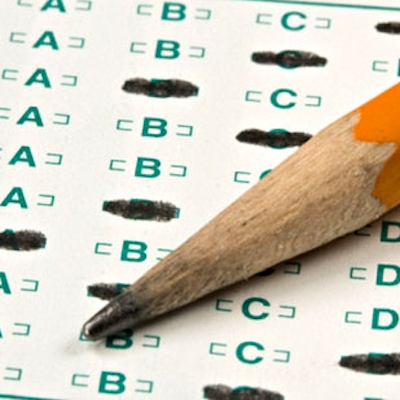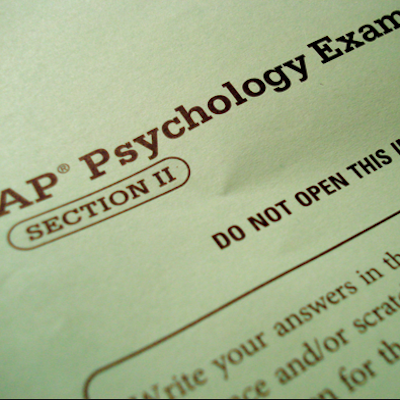It’s All About Education: Social Promotion is Not the Problem
Wednesday, January 07, 2015
A student should not be promoted to the next grade if he or she has not been earning passing grades or is unable to do grade-level work. Almost any citizen will agree with this statement; even President Obama told the Washington Post in 2010, “This notion that we should just graduate kids because they've reached a certain age and we don't want to embarrass them, despite the fact that they may not be able to read, that is a disservice to students; that's a disservice to parents.” Due to the accountability requirements established by federal grants under the No Child Left Behind Act and the Race to the Top, fifteen states and the District of Columbia currently have strict retention policies in place for students who are not reading by third grade. This milestone is based on research that demonstrates that third graders who are not reading on grade level are significantly less likely to graduate high school on time. The Campaign for Grade Level Reading is a national coalition dedicated to promoting this standard; in 2011, only 34% of all fourth graders in the United States were reading on a proficient level, with the remaining two-thirds reading at a basic or below basic level.
So are states actually retaining students who are not reading proficiently by the end of third grade? Are we seeing a rise in retention rates for young children? This is where the issue becomes cloudy. According to a study currently under review at the University of Minnesota, based on a new method for analyzing retention rates in grades 1 – 8, there has not actually been a rise in the number of students held back in the lower grades. Why is this? Well, in all aforementioned fifteen states and DC, a student can be exempted from the mandatory retention policy for reasons such as: participating in a reading intervention program, receiving special education services, previous retention based on reading deficiency, learning English as a second language, a recommendation from a teacher or a principal, or a parental appeal. But there is more going on here than meets the eye: most educators know from experience that retaining kids does not increase their likelihood of achievement; in fact, it has been shown to be ineffective and even damaging. And the deleterious effects of retention only get worse as kids get older, according to an article published by the Civil Rights Project in 2002. Instead of motivating students to work harder, holding kids back in ninth grade increases the likelihood that they will drop out of high school altogether. The researchers found that “widespread retention further exacerbates the racial achievement gap.”
Most school districts and administrators agree that, rather than simply retaining third graders who are not reading on grade level, the better option is to identify struggling students prior to third grade and provide academic supports and remedial classes to help them get back on track. That is why thirty-five states give at least one reading assessment to students in Pre-Kindergarten through third grade, with the goal of identifying those students with reading deficiencies. Expanding access to preschool programs and early literacy programs is one way that states are hoping to address reading problems for young children; offering additional tutoring and after-school programs is another. Locally, the Providence Community Library was awarded a $250,000 grant last year to collaborate with the Providence Public Schools in providing a program called Ready for K! to hundreds of families with children ages 3 – 5 who have no formal preschool experience. The rise in kindergarten readiness assessments (which I previously wrote about here) is also, in part, a reaction to the growing emphasis on early literacy acquisition. An issue brief released in May 2014 by RI Kids Count found that, while RI students are making progress in reading, large achievement gaps persist – in fact, only 19% of our low-income fourth graders scored at the proficient level in the 2013 National Assessment of Educational Progress. The brief goes on to make numerous recommendations for ways to help close this achievement gap (which I also wrote about here).
GET THE LATEST BREAKING NEWS HERE -- SIGN UP FOR GOLOCAL FREE DAILY EBLASTIn Louisville, Kentucky, school administrators are trying something new for their failing middle school students. The Jefferson County Public Schools have opened “transition centers” for those middle school students who have been held back, offering them the option of completing accelerated coursework and tutoring to demonstrate that they have achieved grade-level concepts and rejoin their classmates in the higher grade. Since this is a new program, there is no data yet on its efficacy; anecdotally, some students seem to be motivated to perform when they have a clear goal to work towards and the academic supports to enable their success. It will be interesting to watch this program develop and to see if the district expands this program to students in other grades.
Holding a student back costs a lot of money; nationally, the average cost of a year of education is over $10,500 per pupil; Rhode Island spends just over $14,000 per year to educate each student. That’s a lot of money to waste on holding students back when retention has no demonstrated benefits for students. A 2009 study conducted by the National Institutes of Health concluded that, “Given the expense of grade retention and the emotional toil retention exacts on students, a finding of ‘no significant difference’ for retention on achievement calls into question the educational benefits of grade retention policies.”
Holding students back will not solve the achievement gap. Instead, we should spend education dollars on early childhood programs and family interventions that ensure that all students have the oral language skills, pre-literacy behaviors, and educational experiences to enable them to read fluently by the end of third grade. For those students who are already failing to meet expected grade level goals, we should provide more academic and motivational programs to help them accelerate their learning and take responsibility for their own achievement.
Lauri Lee is an independent consultant with over twenty years of experience in both public and private education, with learners from infants through adults. With experience in marketing, communications, social media, development, admissions, and technology, she is able to synthesize many of the issues facing our educational system today. She lives in Providence with her family, a big dog, and a small cat. She encourages you to connect with her on Twitter @fridovichlee or to contact her directly at [email protected].
Related Slideshow: 10 RI State Education Rankings
Related Articles
- It’s All About Education: Student Engagement Leads to Success
- It’s All About Education: Chronic Absenteeism’s Effect on Learning
- It’s All About Education: Making the Dream a Reality
- It’s All About Education: Playing in the Woods Can Help Kids Reach Their Full Potential
- Eva Marie Mancuso: 4 Education, 4 Jobs, 4 Rhode Island’s Future: Vote Yes on 4
- It’s All About Education: Why the Unschooling Movement is Growing
- It’s All About Education: Should Schools Ban Homework?
- It’s All About Education: Social Promotion and Student Success-What We Know
- It’s All About Education: It’s About Time
- It’s All About Education: The Connection Between Housing and Achievement
- It’s All About Education: Is it Time for a Slow Education Movement?
- It’s All About Education: What if College Isn’t Necessary
- It’s All About Education: How Can We Ensure that Kids Have Great Teachers?
- It’s All About Education: The High Cost of Higher Education
- It’s All About Education: The Rise in Kindergarten Readiness Testing
- It’s All About Education: Can Universal Preschool Close the Achievement Gap?
- It’s All About Education: Why Common Core Won’t Help Our Children
- It’s All About Education: Will Charter Schools Fix Our Public School System?
- It’s All About Education: What is an “Excellent” Teacher, Anyway?
- It’s All About Education: Some of Education’s Best Ideas from 2014























